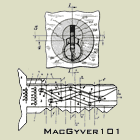While the original locks featured just three locking levers, the locks became increasing secure over time. Miller patented their "Champion 6-Lever" padlock in 1902 (Patent #695,347). The basic design of all of these "pancake" locks was the same; a flat steel key (pictured in blue) was pushed into the lock and directly lifted the locking levers (pictured in yellow):
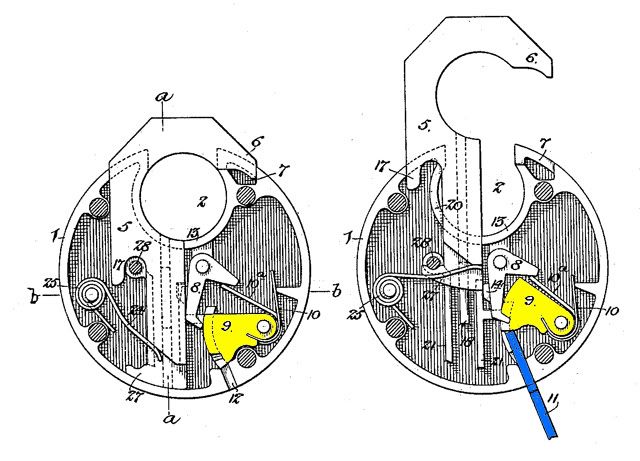
Once all of the levers were raised to the correct height, the locking latch (labelled #8 in the diagrams above) was free to pivot counter-clockwise -- and, in doing so, it disengaged from a notch in the shackle, allowing the shackle to spring open.
The locks themselves were manufactured in brass:
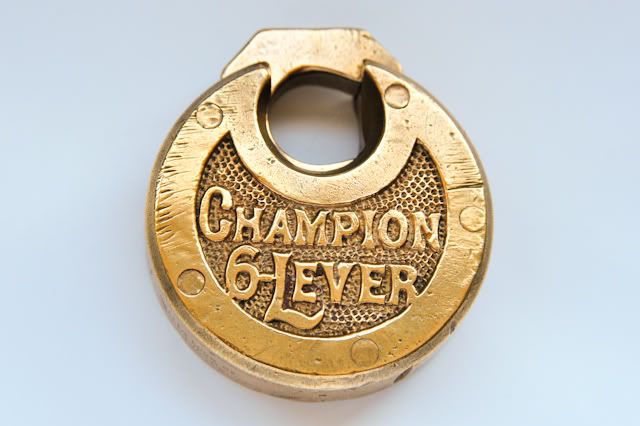
Miller's name and patent information is stamped onto the edge of the lock, and a small drainage hole is drilled in the bottom:
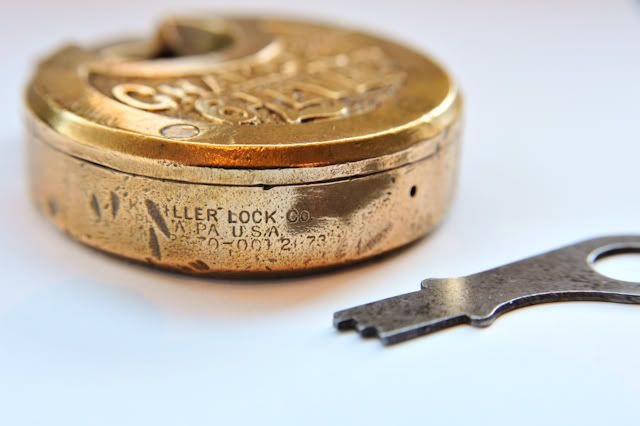
The locks use simple flat steel keys; the keys rust fairly easily, and many of the original keys show surface tarnish from 100 or more years of use and handling:
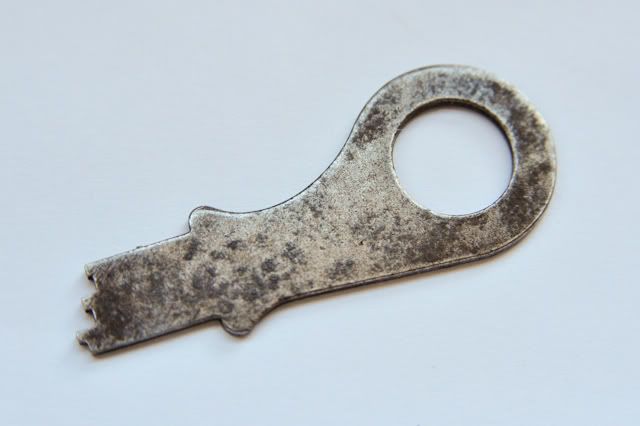
The keyways have no warding, with the levers directly accessible to any thin, straight pick or wire:
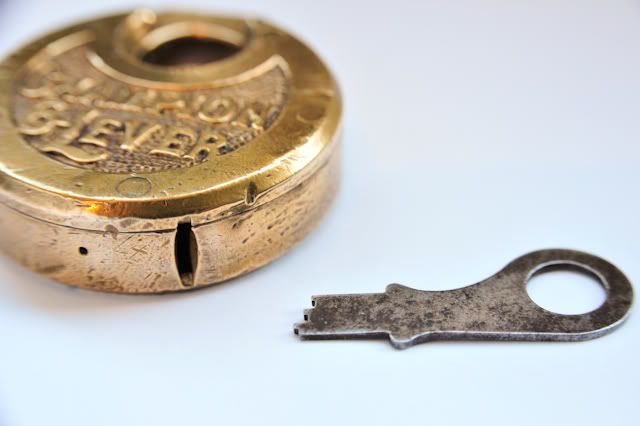
If the lock is still in good condition, the shackle will spring open once the levers are in the correct position:
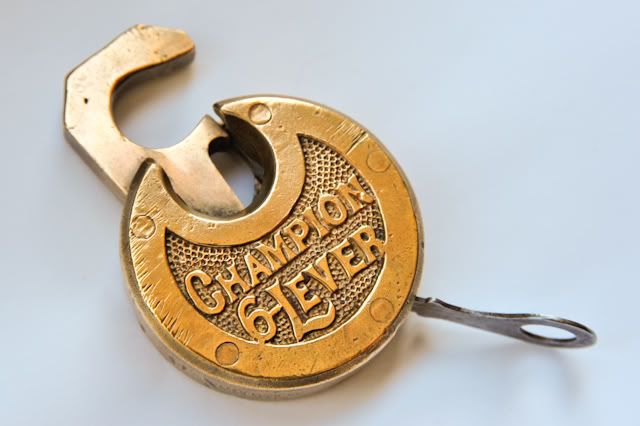
If the lock is open, the position of the levers can be read directly by looking into the keyway, or impressioned onto a soft material. Picking these locks is usually done by tensioning the shackle while probing the levers; one popular technique is to put the lock into a vice and tie a small weight onto the shackle and then use a stiff wire to probe for and lift the binding levers one at a time.




